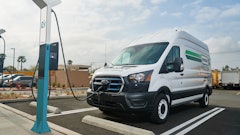
The National Motor Freight Traffic Association’s (NMFTA) Digital LTL Council announces the release of eBOL 2.1. The latest update to the established electronic bill of lading (eBOL) standard was created by the Council in response to industry feedback and is designed to further drive their initiative to digitize the entire LTL shipment lifecycle over the next several years.
“There are many benefits to having a digitized and standardized electronic bill of lading,” says Paul Dugent, executive director of the Council at NMFTA. “The information submitted to the carrier is more accurate due to it being transmitted in an electronic, standardized, digitized format for the shipper. Typically, a carrier receiving a paper bill of lading would manually enter it into their system, which may lead to errors. These errors can appear as misroutes and create additional challenges for the entire supply chain cycle, such as the customer receiving their freight late.”
As for eBOL 2.1, all changes are completely compatible with the existing versions already downloaded and implemented by most of the industry. Critical issues that were made known to the Council by users have been addressed, such as:
- New HTTP methods that add the ability to update or delete eBOL data using the relevant PRO number as the key identifier.
- The expansion of the existing generic limited access locations by adding more specific limited access types. • The addition of nine-digit postal codes as a valid format.
- The addition of a new “scac” attribute that can be used to return a four-digit Standard Carrier Alpha Code™ (SCAC® ).
- The addition of the optional attribute “Weight Unit” to several objects that were missing them and more.


























